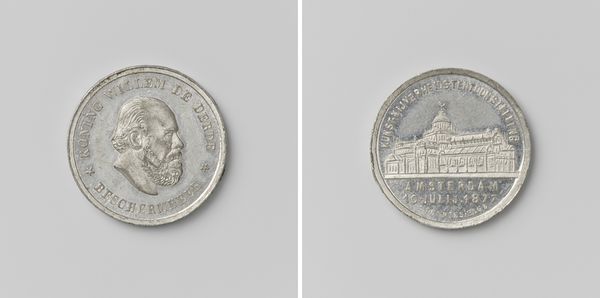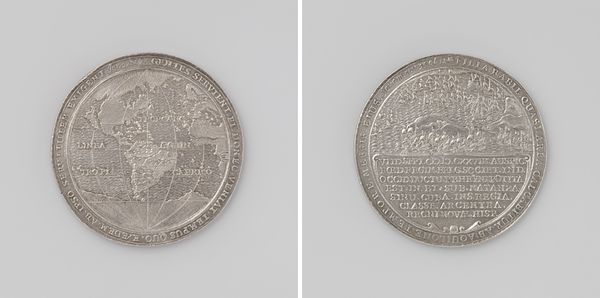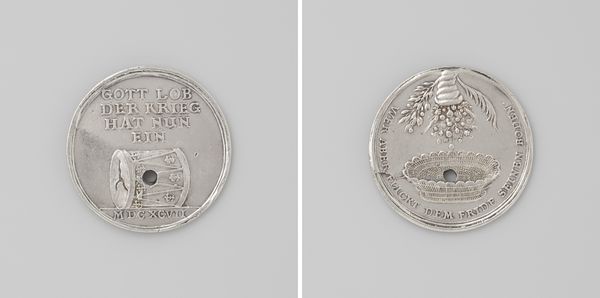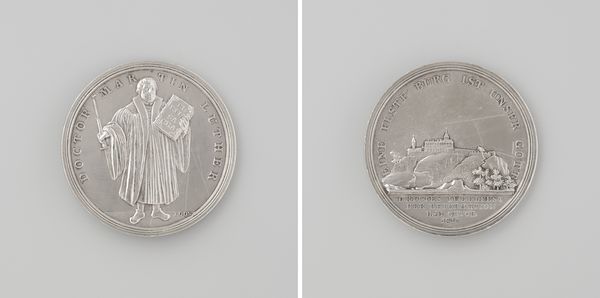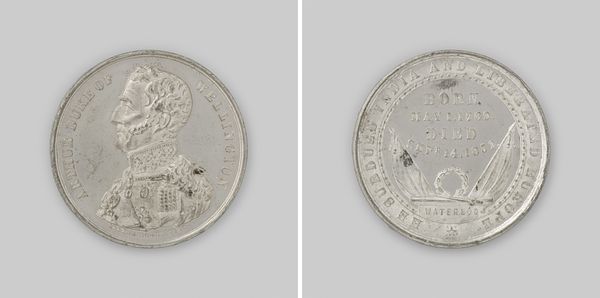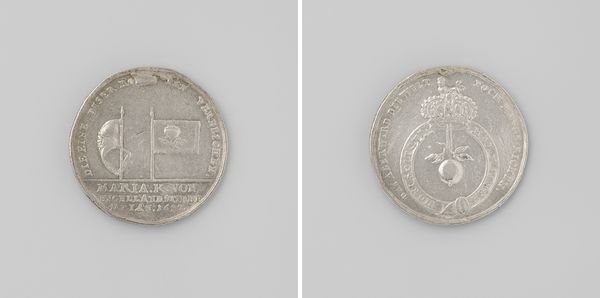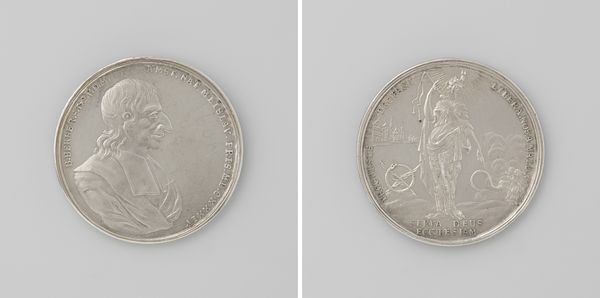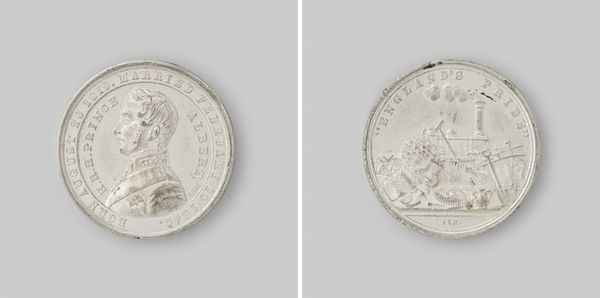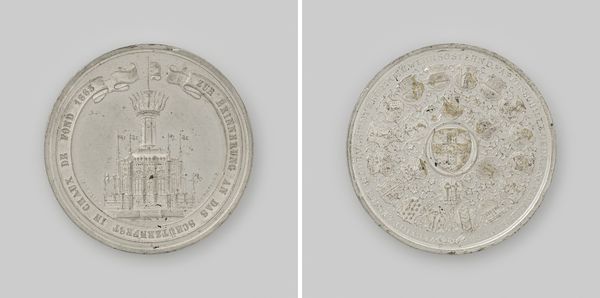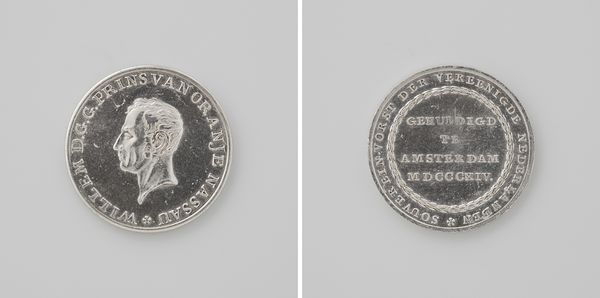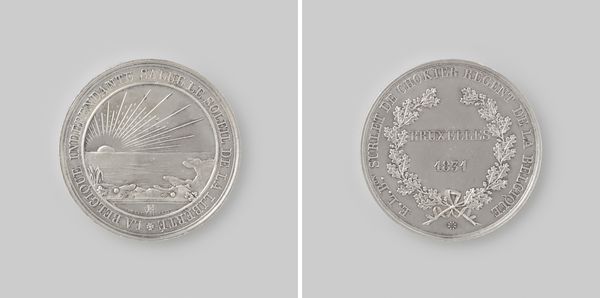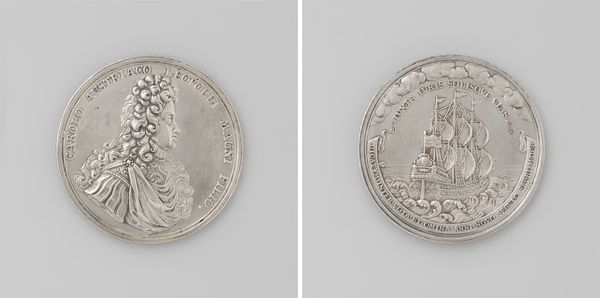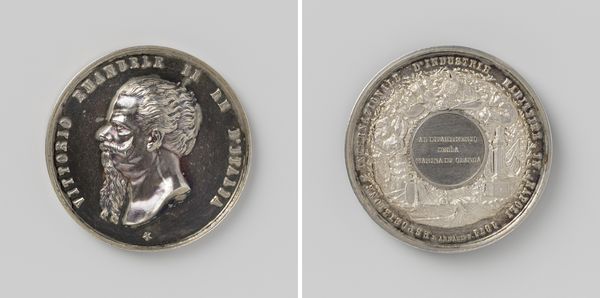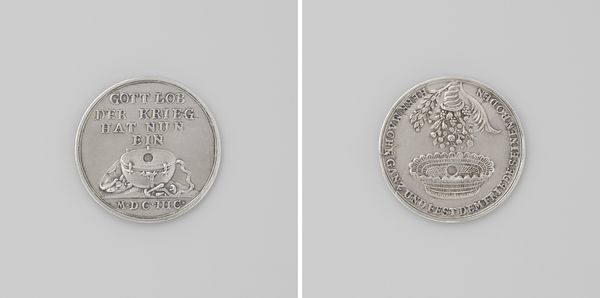
print, metal, sculpture
# print
#
metal
#
sculpture
#
cityscape
Dimensions: diameter 3.3 cm, weight 15.5 gr
Copyright: Rijks Museum: Open Domain
Curator: So, we're looking at a fascinating commemorative piece by Ronald van Tienhoven, entitled "Eerste slag: 400 jaar Nederland-Manhattan." It’s a work from 2009 that appears to be a print or relief on metal, taking the form of a coin or medallion. Thematically, it clearly references the history of Manhattan, in the context of the Dutch colonial history. Editor: Huh, it feels surprisingly...cold. Like a lost coin from some alternate reality where New Amsterdam never became New York. I like the clinical precision though. The lines are so sharp, like an architect’s fever dream etched in silver. Curator: Indeed, that visual coolness speaks volumes, especially given the complexities of colonial narratives. It invokes the act of memorializing a specific version of history, prompting us to reflect on the power dynamics embedded within that act. How do we interpret the inscription referencing the Half Moon sailing up the river? Who does that history center? Editor: I get a faint sense of vertigo looking at the two sides of the coin. One side's all hard-edged cityscape, while the other has this ghostly island silhouette… it’s like two different versions of the same story wrestling for dominance. And, dare I say it, maybe history IS just currency in a way, right? We keep trading versions, upping the value of some narratives while debasing others. Curator: I agree. Think about the composition, the cityscape occupying a privileged space while the Indigenous name 'Mannahatta' and a map representing the original topography becomes secondary, a recessive engraving on the verso of the coin. Van Tienhoven appears to be urging us to critically examine which stories are valued and whose perspectives are marginalized. Editor: It's kind of chilling when you see it like that! I'm thinking it really makes the work stronger in ways the artist might not have imagined at first. It’s like, is he commemorating the anniversary or critiquing it? Both maybe? That uncertainty makes the artwork richer, you know? Curator: Absolutely. It encapsulates the inherent ambiguity of historical representation and colonial legacies, urging a necessary reckoning with historical truth and reconciliation. It isn't just a memorial, it’s a conversation starter. Editor: So, next time you find spare change, check both sides of the story before spending it. Okay, maybe not… but seriously, great way to look at history!
Comments
No comments
Be the first to comment and join the conversation on the ultimate creative platform.
